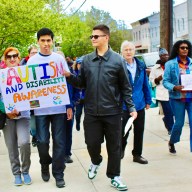Headaches are familiar to nearly everyone: In any given year, almost 90 percent of men and 95 percent of women have at least one. In the vast majority of cases, however, the pain isn’t an omen of some terrible disease.
About 95 percent of headaches are caused by such common conditions as stress, fatigue, lack of sleep, hunger, changes in estrogen level, weather changes, or caffeine withdrawal. The three most common types of headaches are tension, sinus, and migraine (see table below).
Mixed headaches
As understanding of the different types of headaches has evolved, researchers have altered some of their beliefs about tension and migraine headaches and the relationship between the two. This is largely because of the realization that some headaches don’t neatly fit either category. “Mixed” headaches have characteristics of both types, and because they are hard to classify, treatment can be challenging.
For instance, the more intense a tension headache gets, the more it resembles the sharp, throbbing pain of a migraine headache. Likewise, when a migraine headache becomes more frequent, its pain begins to feel like that of a tension headache. Thus, experts now believe that headaches fall along a continuum ordered by their characteristics: The occasional tension headache is at one end and the migraine headache is at the other. In between are chronic tension headache and chronic migraine, which are often lumped together as chronic daily headache.
This doesn’t mean that all headaches share the same mechanisms. Experts still generally believe that tension headaches are stimulated by muscle tightness, while migraine headaches are caused by the dilation and inflammation of blood vessels. However, if you have migraine headaches frequently, you may develop muscle tightness, which can trigger more headaches, creating a vicious cycle.
Headache caused by a medication or illness
Some headaches are actually symptoms of another health problem. Many non-life-threatening medical conditions, such as a head cold, the flu, or a sinus infection, can cause headache. Some less common but serious causes include bleeding, infection, or a tumor. A headache can also be the only warning signal of high blood pressure (hypertension). In addition, certain medications — such as nitroglycerin, prescribed for a heart condition, and estrogen, prescribed for menopausal symptoms — are notorious causes of headache.
Because the following symptoms could indicate a significant medical problem, seek medical care promptly if you experience:
~a sudden headache that feels like a blow to the head (with or without a stiff neck)
~headache with fever
~convulsions
~persistent headache following a blow to the head
~confusion or loss of consciousness
~headache along with pain in the eye or ear
~relentless headache when you were previously headache-free
~headache that interferes with routine activities.
Always take children who have recurring headaches to the doctor, especially when the pain occurs at night or is present when the child wakes in the morning.
Common types of headaches
Tension
Mild to moderate steady pain throughout the head, but commonly felt across the forehead or in the back of the head. Generally not accompanied by other symptoms.
Can affect children, but is most common in adults.
Frequency varies. Generally hours in length.
Sinus
Mild to moderate steady pain that typically occurs in the face, at the bridge of the nose, or in the cheeks. May be accompanied by nasal congestion and postnasal drip.
Affects people of all ages. People with allergies seem most vulnerable.
Frequency varies. Generally hours in length. Often seasonal.
Migraine
Moderate to severe throbbing pain, often accompanied by nausea and sensitivity to light and sound. The pain may be localized to the temple, eye, or back of the head, often on one side only. In migraine with aura, visual disturbance precedes the pain.
Typically occurs from childhood to middle age. In children, migraine is slightly more common among males, but after puberty, it’s much more common in females.
Attacks last a day or longer. They tend to occur less often during pregnancy and with advancing age.
Courtesy HEALTHbeat
Harvard Medical School























